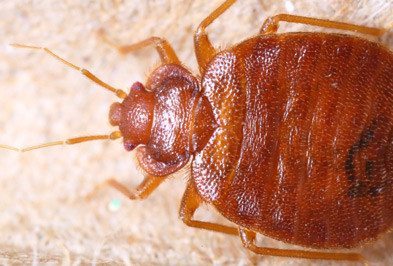Relied On Kings Bug Control Cincinnati OH: Expert Services
Relied On Kings Bug Control Cincinnati OH: Expert Services
Blog Article
Sorts Of Pest Control: Which Method Is Right for Your Invasion?
When encountered with a parasite infestation, the choice of a proper approach for pest control is important in successfully taking care of the scenario. From chemical treatments to biological services, there exists a series of methods that can be used to resolve various kinds of parasites. Each method comes with its own set of benefits and considerations, making the decision-making procedure a nuanced one. Recognizing the subtleties of each approach and evaluating their compatibility with the specific pest infestation handy is essential for achieving long-term success in parasite monitoring. By discovering the numerous sorts of bug control techniques available, individuals can make enlightened choices customized to their distinct situations, guaranteeing a more efficient and sustainable end result in parasite obliteration.
Chemical Bug Control
Chemical pest control entails using artificial or naturally acquired chemicals to handle and eradicate pest populaces effectively. This approach is typically made use of in agriculture, forestry, and property settings to deal with a wide variety of pests, consisting of weeds, rats, and insects. The usage of chemical pesticides can provide quick and targeted remedies to pest infestations, making it a prominent selection for numerous people and organizations.
One of the crucial benefits of chemical pest control is its capability to promptly eliminate insects, minimizing the threat of damage to crops, residential or commercial property, and human health and wellness. By making use of specific chemicals that target specific bugs, this approach can properly control infestations while lessening injury to valuable organisms and the environment when applied properly.
Nevertheless, using chemical bug control additionally elevates concerns about potential unfavorable impacts on non-target types, water resources, and human health. It is important to comply with safety guidelines, apply chemicals sensibly, and consider different pest control methods to minimize these risks and ensure sustainable pest monitoring techniques.
Organic Parasite Control
Biological parasite control, likewise known as biocontrol, uses living organisms to lower and manage parasite populations normally. By using the bug's natural killers or virus, biological parasite control provides a eco friendly and lasting service to pest monitoring.

Mechanical Parasite Control
Making use of hand-operated and physical techniques to handle insect populations, mechanical insect control offers an alternative approach that does not rely upon using living microorganisms or synthetic chemicals. This method involves using obstacles, traps, or other tools to literally prevent or get rid of insects. By blocking parasite access points or setting up catches to capture them, mechanical insect control can efficiently reduce problems without presenting chemicals into the setting.
One typical example of mechanical pest control is making use of mesh screens on doors and windows to avoid insects from getting in buildings. This simple yet reliable technique acts as a physical obstacle, keeping parasites out while enabling for proper air flow. Furthermore, devices like mousetraps, fly swatters, and ultrasonic repellents drop under the mechanical pest control group.
While mechanical bug control methods can be labor-intensive and call for regular surveillance and upkeep, they offer a lasting and environmentally pleasant option for managing bug infestations. By incorporating different mechanical strategies, homeowner can produce a comprehensive insect control approach that reduces dependence on chemical pesticides.
Physical Pest Control

Some typical physical insect control techniques include the usage of obstacles see page such as nets or displays to protect against parasite entrance, traps to capture and remove bugs, and hand-picking to physically remove pests from plants or frameworks. Furthermore, methods like heat therapies can be utilized to control pests like bed pests by increasing the temperature to degrees that are deadly to the insects.
Physical pest control is specifically beneficial in integrated parasite administration (IPM) techniques, where numerous bug control methods are incorporated for efficient pest monitoring while lessening making use of chemicals. By making use of physical insect control strategies, individuals can effectively attend to pest problems with minimal ecological impact.
Integrated Parasite Administration
When applying physical bug control approaches as part of parasite management approaches, Integrated Insect Monitoring (IPM) emerges as a thorough method that leverages numerous techniques to successfully regulate pest populations. IPM concentrates on long-lasting prevention of bugs via a combination of organic, social, physical, and chemical tools tailored to details bug problems. By integrating multiple control methods, IPM aims to lessen the risks connected with bugs while also decreasing dependence on chemical remedies.
One key element of IPM is the focus on surveillance and assessing pest populations to identify one of the most ideal control methods. This proactive method permits very early treatment and targeted approaches, resulting in a lot more effective parasite monitoring. In addition, IPM promotes environmentally friendly practices by prioritizing non-chemical control methods and only utilizing pesticides as a last resource.
Final Thought

By making use of the pest's natural killers or pathogens, biological insect control supplies a lasting and environmentally friendly option to pest monitoring. - Kings pest control Cincinnati
Using physical and hand-operated approaches to manage pest populations, mechanical insect control browse this site uses an alternate strategy that does not count on the usage of living microorganisms or artificial chemicals.A reliable strategy to managing pest populaces without relying on chemical or biological methods includes the use of physical bug control techniques.When executing physical parasite control approaches as part of bug monitoring techniques, Integrated Pest Management (IPM) emerges as an extensive method that leverages various techniques to effectively regulate pest populaces. Chemical bug control includes the use of pesticides, organic parasite control makes use of all-natural predators, mechanical pest control entails physical obstacles, physical bug control includes trapping or getting rid of bugs, and integrated insect management her response incorporates several techniques for a holistic strategy to pest control.
Report this page